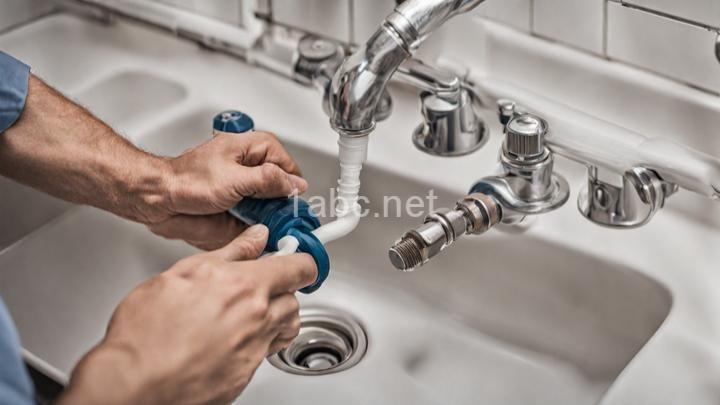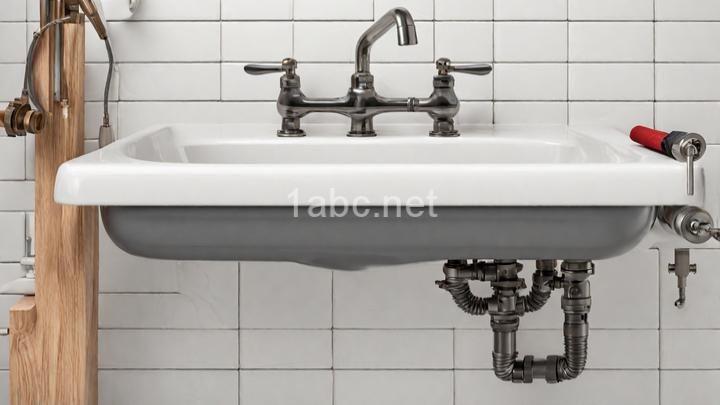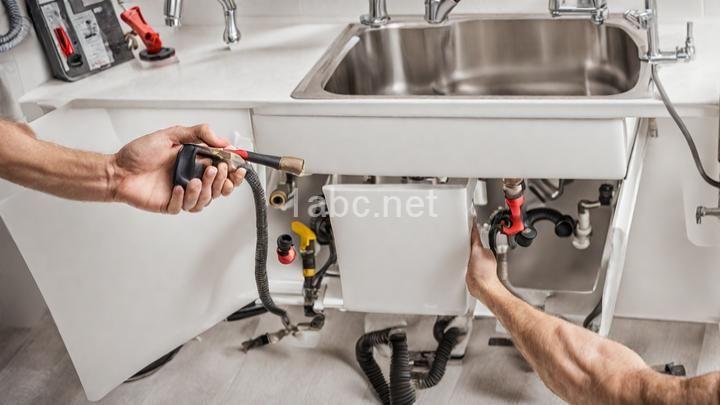Troubleshooting Your Home's Plumbing: How to Identify and Solve Common Issues

Introduction:
Welcome, readers, to our comprehensive guide on troubleshooting your home's plumbing system. Maintaining a well-functioning plumbing system is crucial for the comfort and convenience of your household. In this blog post, we will provide friendly guidance on how to identify and solve common plumbing issues. By understanding the basics of your plumbing system and learning some troubleshooting techniques, you can save time and money by resolving minor plumbing problems on your own.
I. Understanding Your Home's Plumbing System:
To effectively troubleshoot plumbing issues, it is essential to have a basic understanding of how your home's plumbing system works. A typical residential plumbing system consists of various interconnected components, including pipes, fixtures, and appliances.
Pipes: These are the main channels that transport water throughout your home. There are two types of pipes commonly used in residential plumbing systems: supply pipes and drain pipes. Supply pipes deliver clean water to your fixtures, while drain pipes carry wastewater away.
Fixtures: These are plumbing devices used for specific purposes, such as sinks, faucets, showers, toilets, and bathtubs. Fixtures are connected to the supply and drain pipes.
Appliances: In addition to fixtures, your plumbing system may include appliances like water heaters, dishwashers, and washing machines. These appliances are connected to the plumbing system and require regular maintenance.
Understanding the layout and interconnectedness of these components will help you troubleshoot plumbing issues more effectively.
II. Identifying Common Plumbing Issues:
A. Low Water Pressure:
One of the most common plumbing issues homeowners face is low water pressure. Signs of low water pressure include weak flow from faucets or showers, slow-filling toilets, and inadequate water supply for appliances.
Possible causes of low water pressure include clogged pipes, mineral deposits, faulty pressure regulators, or a malfunctioning water pump. To identify the cause of low water pressure, follow these steps:
- Check the water pressure: Use a pressure gauge to measure the water pressure at different fixtures. Compare the readings to the optimal range specified by your water utility provider.
- Inspect for leaks: Check for any visible leaks in the plumbing system. Leaks can cause a drop in water pressure.
- Test fixtures individually: Turn on each fixture separately to determine if the low water pressure is specific to one fixture or widespread. This will help narrow down the potential cause.
B. Leaking Faucets:
Leaking faucets are not only annoying but can also waste a significant amount of water. Signs of a leaking faucet include dripping or continuous flow even when the faucet is turned off.
Common causes of leaking faucets include worn-out washers, damaged O-rings, corroded valve seats, or loose parts. To fix a leaking faucet, follow these DIY steps:
- Turn off the water supply: Locate the shut-off valve under the sink and turn it off to prevent water flow.
- Disassemble the faucet: Use a wrench to carefully remove the handle and expose the internal parts.
- Inspect and replace damaged parts: Examine the washers, O-rings, and valve seats for wear or damage. Replace any faulty components with new ones.
- Reassemble the faucet: Put the faucet parts back together in the reverse order of disassembly. Ensure all connections are tight.
C. Clogged Drains:
Clogged drains are a common plumbing issue that can cause slow drainage, foul odors, or even backups. Recognizing the signs of a clogged drain and understanding the severity of the blockage will help you determine the appropriate troubleshooting method.
- Recognizing signs of a clogged drain: If you notice water draining slowly or experiencing foul odors coming from drains, it is likely that you have a clogged drain.
- Differentiating between minor blockages and severe clogs: Minor clogs can often be resolved using simple household tools or natural remedies, while severe clogs may require professional intervention.
- Effective methods to clear minor clogs: To clear minor clogs, try using a plunger, a drain snake, or a mixture of baking soda and vinegar. These methods can often dislodge the blockage and restore proper drainage.
D. Running Toilets:
A running toilet is not only a nuisance but can also waste a significant amount of water. Signs of a running toilet include continuous water flow, periodic refilling noises, or a constantly moving water meter.
Common causes of running toilets include faulty flappers, malfunctioning fill valves, or a warped flush valve. To troubleshoot a running toilet, follow these steps:
- Identify the cause: Lift the toilet tank lid and observe the components inside. Look for any visible issues like a misaligned flapper or a loose fill valve.
- Adjust or replace components: If the flapper is misaligned, reposition it. If it is worn or damaged, replace it. The same applies to a faulty fill valve or a warped flush valve.
III. Solving Plumbing Issues at Home:
A. Basic Tools Every Homeowner Should Have:
To effectively solve common plumbing issues, it is important to have a few essential tools in your toolbox. These tools will come in handy for basic repairs and maintenance. Some essential tools for DIY plumbing include:
- Plunger: Used to clear clogs in sinks, toilets, and showers.
- Adjustable wrench: Ideal for loosening or tightening nuts and bolts.
- Pipe wrench: Designed to grip and turn pipes, fittings, and fixtures.
- Pipe cutter: Used to cut pipes to the desired length.
- Auger or drain snake: Helps remove clogs from drains and pipes.
- Plumber's tape: Used to seal threaded connections and prevent leaks.
B. Step-by-Step Repair Techniques:
- Low water pressure: Depending on the cause of low water pressure, you may need to clean or replace clogged pipes, remove mineral deposits, replace faulty pressure regulators, or repair/replace a malfunctioning water pump. Consult online tutorials or plumbing guides for step-by-step instructions specific to your issue.
- Leaking faucets: By following the DIY steps mentioned earlier, you can fix most leaking faucets on your own. Remember to turn off the water supply before starting any repairs.
- Clogged drains: For minor clogs, start by using a plunger to create suction and dislodge the blockage. If the plunger doesn't work, try a drain snake or a mixture of baking soda and vinegar. Severe clogs may require professional assistance.
- Running toilets: Once you identify the cause of a running toilet, adjust or replace the faulty components as needed. You can find detailed instructions online or consult a plumbing guide.
IV. When to Seek Professional Help:
While DIY troubleshooting and repairs can save you money, there are certain scenarios where it is best to seek professional help. These include:
- When dealing with complex plumbing systems or major repairs, such as replacing pipes or installing new fixtures.
- If you lack the necessary tools or experience to tackle a specific issue.
- When dealing with a plumbing emergency that requires immediate attention, such as burst pipes or severe leaks.
- If you have attempted DIY repairs but the problem persists or worsens.
When hiring a professional plumber, ensure they are licensed, insured, and have positive reviews from previous customers. Recommendations from friends or family can also help you find reliable plumbing services.
Conclusion:
Maintaining a well-functioning plumbing system is crucial for the comfort and convenience of your household. By understanding the basics of your home's plumbing system and learning how to troubleshoot common issues, you can save time and money by resolving minor plumbing problems on your own. Remember to have the necessary tools in your toolbox, follow step-by-step repair techniques, and seek professional help when needed. Don't hesitate to take an active role in maintaining your home's plumbing system and share your own experiences or leave comments with any questions you may have.
FREQUENTLY ASKED QUESTIONS
What are some common plumbing issues that homeowners face?
Some common plumbing issues that homeowners face include:
- Clogged drains: This is a frequent problem caused by the buildup of debris, such as hair, grease, or soap residue, in the pipes.
- Dripping faucets: A dripping faucet not only wastes water but can also be irritating and lead to higher water bills.
- Leaky pipes: Leaky pipes can cause water damage to ceilings, walls, and floors, and can also result in increased water bills.
- Running toilets: A running toilet can waste a significant amount of water and may be caused by a faulty flapper valve or a problem with the fill valve.
- Low water pressure: This can be due to various reasons, such as a clogged aerator, mineral deposits in the pipes, or a problem with the water supply line.
- Water heater issues: Problems with water heaters can range from insufficient hot water to leaks or strange noises coming from the unit.
- Sewer system backups: A sewer system backup can cause toilets to overflow, drains to become clogged, and unpleasant odors throughout the house.
It is usually recommended to contact a professional plumber to fix these issues to ensure proper repairs and prevent further damage.
What should I do if I have a clogged drain?
If you have a clogged drain, here are a few steps you can try to unclog it:
- Start by using a plunger: Fill the sink or bathtub with enough water to cover the rubber part of the plunger. Place the plunger over the drain and push down and up several times to create suction. This may help dislodge the clog.
- Use a drain cleaner: There are many commercial drain cleaners available in the market. Follow the instructions on the label carefully and use them as directed. Be cautious and use gloves and eye protection when handling these chemicals.
- Try a natural remedy: If you prefer a more eco-friendly approach, mix equal parts baking soda and vinegar. Pour this mixture down the drain and let it sit for about 30 minutes. Then, flush it with hot water to clear the clog.
- Use a plumber's snake: If the clog persists, you can try using a plumber's snake to manually remove the blockage. Insert the snake into the drain and turn the handle clockwise to break up and remove the clog.
- Call a professional plumber: If these methods don't solve the issue, it may be time to call a professional plumber. They have the necessary tools and expertise to tackle complex clogs.
Remember, prevention is always better than cure. Regularly clean and maintain your drains to avoid clogs in the future.
How can I fix a running toilet?
Fixing a running toilet can be a relatively simple task. Here are some steps you can follow:
- Remove the tank lid and inspect the inside mechanism. Check if the flapper valve or the chain connecting it to the flush handle is tangled or broken. Adjust or replace as necessary.
- Verify that the fill valve is functioning properly. Ensure that the water level in the tank is at least 1 inch below the overflow tube.
- If the water level is too high, adjust the float ball or the float cup mechanism attached to the fill valve. You can manually adjust the float or bend the float arm to achieve the appropriate water level.
- If the fill valve is faulty, consider replacing it. Turn off the water supply to the toilet, remove the old fill valve, and install the new one according to the manufacturer's instructions.
- Inspect the overflow tube for any blockages or damage. Clear any debris if necessary.
- Check the flapper or the flush valve seat for mineral deposits or wear. Clean or replace the flapper or the flush valve if needed.
- Finally, ensure that all the connections are tight and that there are no leaks.
Remember to exercise caution and turn off the water supply before working on the toilet. If these troubleshooting steps do not resolve the issue, it may be best to contact a professional plumber for further assistance.

